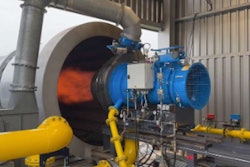
The 2023 National Roadway Safety Awards revealed that state departments of transportation are finding ways to engineer simple, low-cost features to make roads safer.
Those include J-turns in Minnesota, high-friction pavement in Florida, and rumble strips in Louisiana – all showing results of reduced fatal and serious-injury crashes.
Here’s a look at some of the success stories that won awards, which are sponsored by the Federal Highway Administration and the nonprofit Roadway Safety Foundation:
J-Turns
The Minnesota DOT has reduced the severity of crashes on high-speed divided highways through widespread use of J-turns, which it began deploying in 2010.
The state now has 80 such intersections, also known as restricted crossing U-turns. The result has been a 69% reduction in fatal and serious-injury crashes, according to a 2021 evaluation.
The J-turn works best at intersections on four-lane divided highways where there is not enough traffic on intersecting side roads to justify a traffic light. The J-turn configuration uses raised medians to require drivers approaching the highway to turn right. Those who wanted to go left or straight through the intersection can later turn into a designated lane to make a U-turn.
That prevents drivers from having to cross multiple lanes of traffic and the possibility of getting T-boned.
High-Friction Pavement
The Florida DOT began adding highly skid-resistant material in 2020 to three intersections in Tampa to cause vehicles to come to a stop within a shorter distance, so they wouldn’t end up in pedestrian crosswalks.
Though high-friction pavement has been used for dangerous curves, this is believed to have been the first time it was used for signalized intersections, according to FDOT.
“FDOT’s two-year before and after study found that the increased friction reduced improper stopping behaviors at the three signalized intersections,” the agency says. “On average, these reductions ranged from 11 percent to 31 percent compared to the pre-treatment conditions.”
Rumble Strips
The Acadiana region of Louisiana was experiencing a high number of crashes caused by drivers running through the back of T-intersections, particularly due to drivers using their cellphones.
So Acadiana safety and planning officials, along with the Louisiana DOTD, developed plans for 15 intersections that ranged from installing T-intersection signs, redundant and oversized stop signs, flashing beacons, and/or transverse rumble strips at the terminal roadway’s approach.
At the locations where the improvements were implemented, “there was at least a 50 percent reduction in run-through intersection crashes, with the majority of locations seeing a complete elimination of this crash type,” according to the Acadiana Planning Commission.
All-Way-Stop Control
There’s nothing new or exciting about all-way-stop control, but the North Carolina DOT has taken it to a new level by making it the focal point of a strategy to reduce crashes at high-risk rural intersections.
Between 2020 and early 2023, the NCDOT made all-way-stop conversions at about 450 minor-road-stop-control intersections. “Before AWS, there were 81 fatal crashes at the intersections studied,” NCDOT reports. “After AWS, there have been no fatal crashes at the study intersections to date.”
Each intersection conversion cost about $30,000; whereas, the average traffic signal project costs about six times that amount, the agency says.
The Delaware DOT also won an award for its use of all-way-stop control on 20 intersections, which resulted in a 75% reduction in fatal crashes and a 90% reduction in crashes with serious injury.
The Awards
The National Roadway Safety Awards honor public agencies for safety achievements that help move the United States toward zero deaths and serious injuries on the nation’s roadways.
The National Roadway Safety Awards, presented biannually since 1999, are evaluated on safety effectiveness, innovation and efficient use of resources.
Other honorees are:
- Illinois Tollway for creating an app that shows livestream video of serious crashes to speed up incident response
- Texas DOT for reducing pedestrian fatalities on an Austin highway, particularly among people experiencing homelessness
- South Jersey Transportation Planning Organization for developing a plan to prioritize cyclist and pedestrian safety in rural Cumberland County
- The Port Authority of NY & NJ for reducing crashes by using timely data analysis to proactively identify and address safety problems
- Caltrans for implementing pedestrian protections, signs to prevent wrong-way driving and other cost-effective safety measures more quickly
- Virginia DOT (Honorable Mention) for funding lower-cost safety projects in a more systemic way aimed at preventing traffic fatalities and serious injuries
- Nevada DOT (Honorable Mention) for its first comprehensive plan to reduce speeding, a leading cause of fatal and severe crashes.















